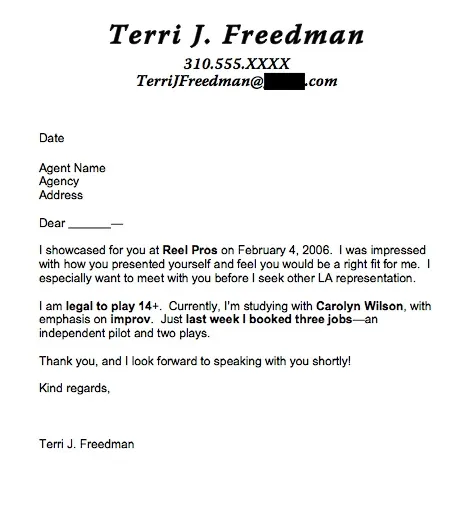Understanding the Email Body Cover Letter
In the digital age, the email body cover letter has become an essential tool for job seekers. Unlike a traditional cover letter attached as a separate document, an email body cover letter is written directly within the body of your email. This approach offers a more immediate and accessible introduction to your qualifications and personality. Understanding its purpose, format, and best practices is crucial for making a positive first impression. This guide will help you master the art of the email body cover letter, ensuring your applications stand out from the competition. It allows you to immediately grab the attention of the hiring manager without requiring them to open an attachment. This convenience can significantly increase the likelihood of your application being reviewed.
Why Use an Email Body Cover Letter?
The primary advantage of an email body cover letter is its immediacy and convenience. It provides an immediate introduction to your qualifications, skills, and personality. This can be particularly effective when applying for jobs through online portals where hiring managers may quickly scan applications. Additionally, it can highlight key skills and experiences directly, encouraging the reader to learn more by reviewing your resume, which is often attached. Moreover, it ensures that your message is viewed, assuming the hiring manager opens the email. It also makes it easier for mobile viewing, as the content is easily accessible without needing to download a separate document. By writing a well-crafted email body cover letter, you present yourself professionally and concisely, increasing your chances of securing an interview.
Key Elements of an Effective Email Body Cover Letter
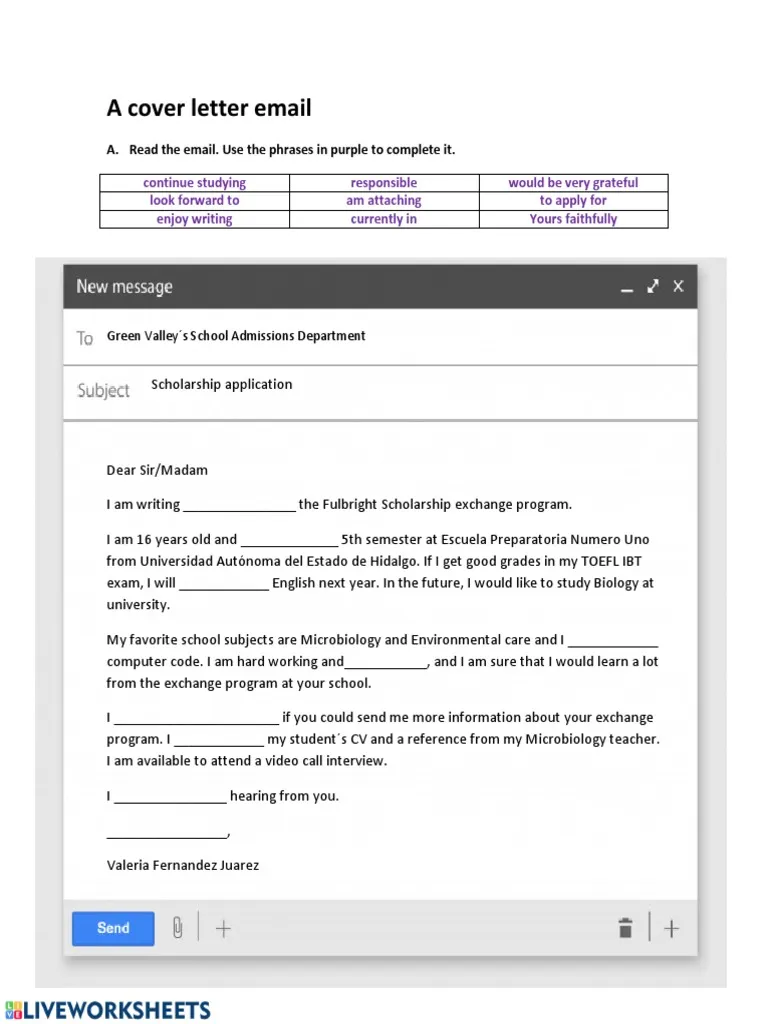
An effective email body cover letter consists of several key elements, each playing a vital role in conveying your message and making a strong impression. First and foremost, it should include a compelling opening, immediately capturing the reader’s attention. This opening should clearly state the position you are applying for and how you learned about it. The middle section should highlight your relevant skills and experiences, showcasing your accomplishments and how they align with the job requirements. It should provide concise, specific examples to back up your claims. Lastly, your letter should conclude with a strong call to action, encouraging the hiring manager to review your resume and contact you for an interview. Proper formatting, a professional tone, and careful proofreading are essential throughout the entire letter. This comprehensive approach is the key to making a positive impression and moving forward in the application process.
Personalizing Your Email Body Cover Letter
Personalization is a cornerstone of an impactful email body cover letter. Generic cover letters are easily recognizable and often dismissed. Tailor your cover letter to each specific job application by researching the company and understanding the job description. Start by addressing the hiring manager by name whenever possible. This shows that you have taken the time to find out who will be reading your application. Next, refer to the specific requirements listed in the job posting. Highlight how your skills and experiences directly align with these requirements, providing relevant examples and quantifiable results. Mentioning the company’s values, mission, or recent projects can also demonstrate your genuine interest and understanding. Finally, reflect on how your unique qualities and experiences make you an ideal candidate for the role and the company. This focused and personalized approach will significantly increase your chances of capturing the hiring manager’s attention.
Addressing the Hiring Manager Directly
Addressing the hiring manager directly is a crucial step in personalizing your cover letter. Finding the hiring manager’s name demonstrates your commitment to the application. When possible, research the hiring manager’s name and title. If you cannot find a specific name, using a generic greeting like “Dear Hiring Manager” is still better than a generic opening. This demonstrates a level of effort that can set your email apart. The direct address immediately establishes a connection, signaling that you have gone the extra mile to tailor your application to the recipient. This small step indicates that you value the opportunity and are genuinely interested in the position. Always double-check the name’s spelling and title, ensuring accuracy to make a positive first impression.
Highlighting Relevant Skills and Experience

Focusing on your relevant skills and experience is vital for demonstrating your suitability for the job. Review the job description carefully and identify the key skills and experiences that the employer is seeking. Then, highlight the skills, experiences, and accomplishments that align with those requirements, offering concrete examples to support your claims. Use action verbs to describe your responsibilities and achievements, making your accomplishments more vivid and memorable. Whenever possible, quantify your achievements with numbers or data, showing the impact of your contributions. For instance, instead of stating that you managed a project, indicate that you managed a project that was completed on time and under budget. This method helps convince the reader of your capabilities by showing them rather than simply telling them.
Showcasing Your Accomplishments
Showcasing your accomplishments is a powerful way to demonstrate your value to a potential employer. Instead of simply listing your responsibilities, use your email body cover letter to highlight specific achievements that align with the job requirements. Focus on results-driven examples that illustrate your skills and expertise. Use the STAR method (Situation, Task, Action, Result) to provide a clear and concise narrative of your accomplishments. Begin by setting the situation, then describe the task you needed to complete, explain the actions you took, and, finally, state the result. Quantify your achievements wherever possible, using numbers to show the impact of your work. For example, “Increased sales by 15% in one quarter” is more compelling than “Improved sales.” Highlighting your achievements not only validates your skills but also provides concrete evidence of your ability to succeed in the role. This is how you make a truly impressive cover letter.
Tailoring Your Letter to the Job Description
Tailoring your email body cover letter to the specific job description is crucial for showcasing your relevance and enthusiasm. Before writing, carefully analyze the job posting to understand the key skills, experiences, and qualifications the employer seeks. Then, customize your letter to address those requirements directly. Use the same keywords and phrases from the job description to demonstrate that you understand the role and what the employer is looking for. Highlight how your skills, experience, and accomplishments align with the listed criteria. This demonstrates that you have the right qualifications and also that you have read and understood the posting. Moreover, tailoring your letter shows your attention to detail and your genuine interest in the specific position. By crafting a letter that reflects the job’s specific needs, you increase your chances of making a strong impression and securing an interview. Remember to always proofread and edit carefully to make sure the tailored content is accurate and well-written.
Structuring Your Email for Clarity
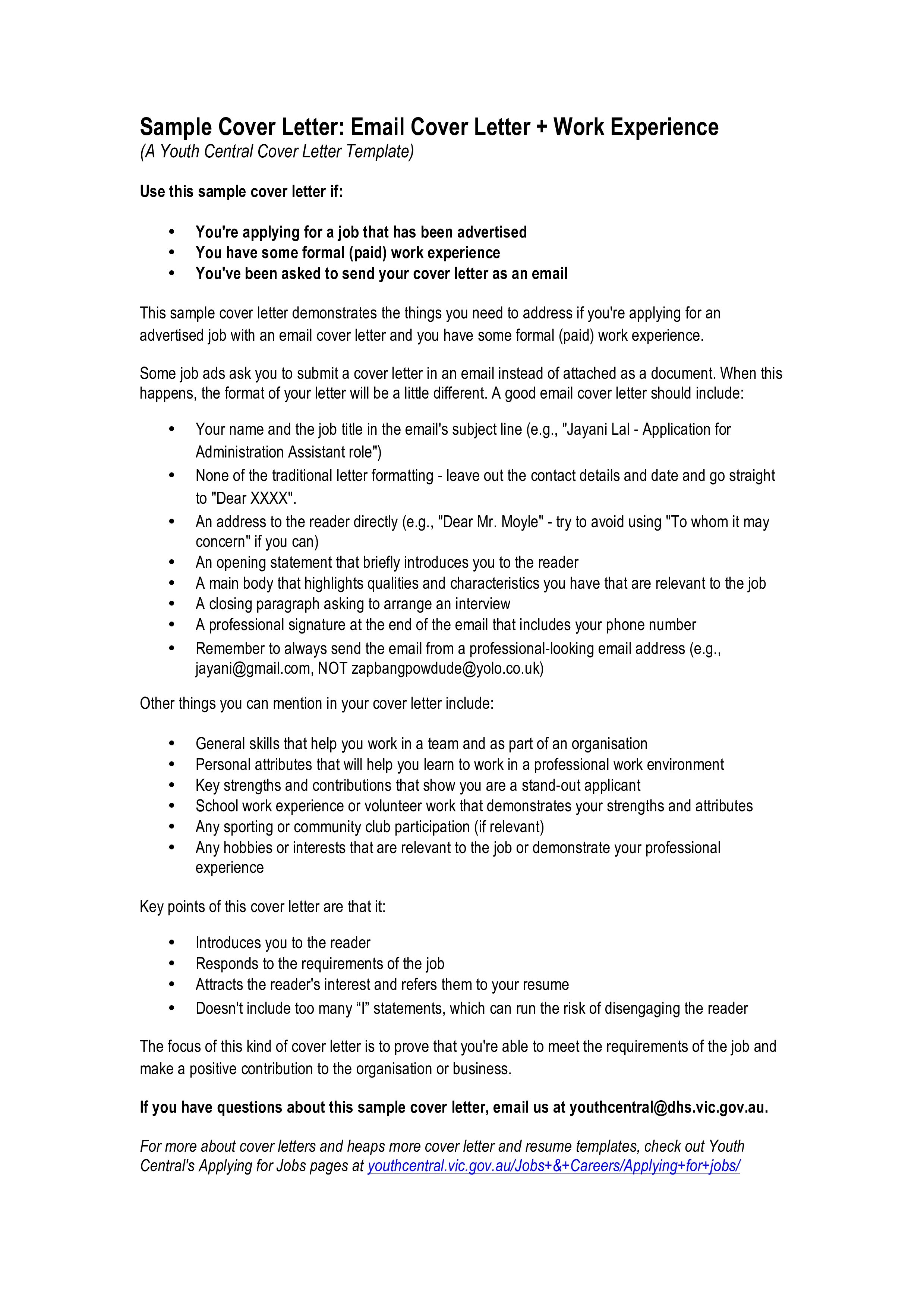
A clear and well-structured email body cover letter makes it easier for the hiring manager to quickly grasp your key qualifications and understand why you are the right fit for the job. Start with a concise and compelling opening that states the position you are applying for and where you found the job listing. This should immediately grab the reader’s attention. Follow with a middle section that highlights your relevant skills, experiences, and accomplishments. Use bullet points and short paragraphs to improve readability and break up large blocks of text. In the closing, restate your interest in the role and include a strong call to action, such as requesting an interview. By structuring your letter logically and using formatting to enhance readability, you ensure that your message is easy to understand and remember. This clarity and organization will significantly increase your chances of making a positive first impression.
Formatting Best Practices
Formatting your email body cover letter correctly enhances its readability and professionalism. Use a clean and readable font such as Arial or Calibri. Ensure that your font size is easy to read, typically between 10 and 12 points. Use bullet points and short paragraphs to break up large blocks of text and make the content more digestible. Leave a blank line between paragraphs to add visual separation. Maintain consistent formatting throughout the email, including consistent margins and alignment. Be mindful of the email client’s formatting capabilities; avoid complex formatting that may not display correctly across all platforms. Ensure that your email is free of formatting errors, such as stray symbols or mismatched fonts. By adhering to these formatting best practices, you can ensure that your email cover letter is both easy to read and visually appealing, making a strong and positive impression on the hiring manager.
Subject Line Essentials for Your Email
The subject line of your email is the first thing the hiring manager will see, making it an essential part of your application. Keep the subject line clear, concise, and professional. Begin by including the job title and the position you are applying for to instantly communicate the purpose of your email. Consider adding your name after the job title to make it easy for the recipient to identify who the email is from. Avoid vague subject lines like “Job Application” or “Resume.” Instead, use specific and informative subject lines, such as “Application for Marketing Manager – [Your Name].” Double-check your subject line for any typos or errors before sending. A well-crafted subject line grabs the hiring manager’s attention and ensures your application is noticed.
Crafting a Compelling Opening
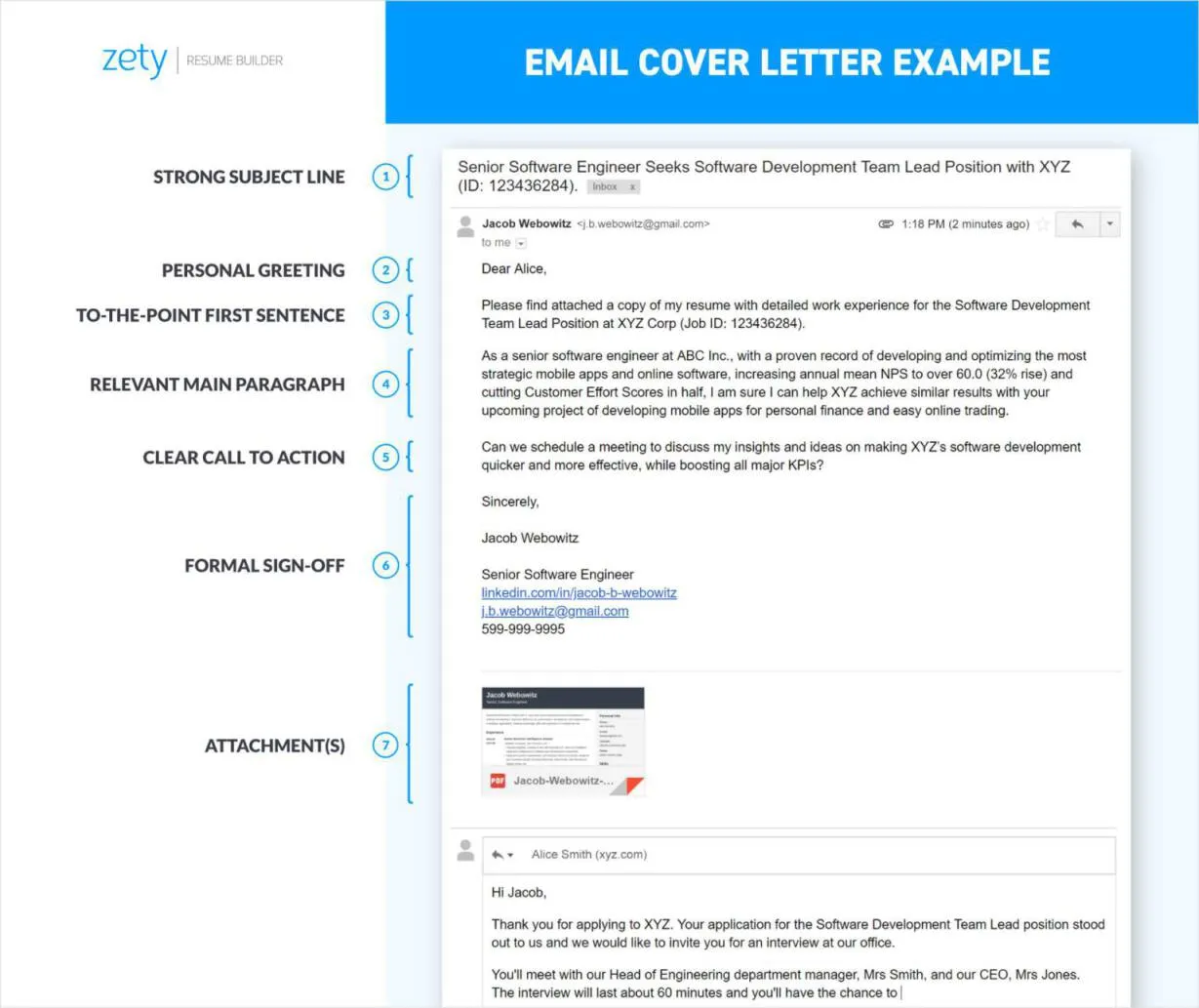
The opening of your email body cover letter sets the tone and captures the hiring manager’s attention, making it a critical element. Start by clearly stating the position you are applying for and where you found the job listing. This immediately establishes the context and shows that you are responding to a specific opportunity. You can then express your enthusiasm for the role and the company. Consider mentioning a specific detail from the job description that piqued your interest. Show that you have done your research and have a genuine interest in the position. Personalize the opening by addressing the hiring manager by name if possible. A well-crafted opening creates a positive first impression and encourages the reader to continue to review your application.
Writing a Strong Middle Section
The middle section is the heart of your email body cover letter, where you highlight your skills, experience, and accomplishments. Focus on the key requirements outlined in the job description and how your qualifications align with them. Provide specific examples to demonstrate your abilities and quantify your achievements whenever possible. Use concise paragraphs and bullet points to improve readability and keep the information easy to digest. Explain the situation, the task, the actions you took, and the results achieved (STAR method). Tailor the content to match the needs of the specific job and organization. By clearly and effectively communicating how you meet the job requirements, you provide the hiring manager with a clear understanding of your suitability for the role.
Concluding with a Call to Action
The conclusion of your email body cover letter should leave a lasting impression, reinforcing your interest and encouraging the hiring manager to take the next step. Reiterate your enthusiasm for the position and summarize why you believe you are a strong fit. Include a strong call to action, inviting the hiring manager to review your resume and contact you for an interview. Provide your contact information, including your phone number and email address. Express your appreciation for their time and consideration. Keep the conclusion concise and professional, and always proofread carefully to ensure there are no errors. A well-crafted conclusion solidifies your interest, encourages a response, and increases your chances of moving forward in the hiring process.
Proofreading and Editing Your Cover Letter

Proofreading and editing your email body cover letter are essential for ensuring professionalism and avoiding errors that can detract from your application. Before sending, carefully review your cover letter for any grammatical errors, spelling mistakes, and punctuation errors. Make sure the language is clear, concise, and free of jargon or overly complex sentences. Check that all information is accurate, including the hiring manager’s name, the company name, and the job title. Read your letter aloud to identify any awkward phrasing or sentences that could be improved. Have a friend or colleague review your letter to provide a fresh perspective and catch any errors you may have missed. By carefully proofreading and editing your cover letter, you demonstrate attention to detail and commitment to excellence.
Common Mistakes to Avoid
Avoiding common mistakes is essential for making a positive impression with your email body cover letter. One frequent mistake is using a generic or template-based cover letter that is not tailored to the specific job or company. Ensure each letter is customized. Another is including excessive information that isn’t relevant to the job. Keep the letter concise and focused. Avoid using overly casual language or slang. Maintain a professional tone and avoid sounding desperate or entitled. Ignoring the job description and failing to highlight relevant skills and experiences can also be a significant error. Always proofread carefully for any typos, grammatical errors, or formatting issues. These mistakes can undermine your application and detract from your qualifications. By avoiding these common errors, you can create a compelling and effective email body cover letter.
Maintaining a Professional Tone
Maintaining a professional tone is crucial for making a positive impression with your email body cover letter. Use formal language, avoiding slang, contractions, and overly casual expressions. Start and end your email with appropriate greetings and closings, such as “Dear Mr./Ms. [Last Name]” and “Sincerely” or “Best regards”. Use clear and concise language to convey your message effectively. Avoid using jargon or overly technical terms that the hiring manager may not understand. Keep the focus on your qualifications and how they align with the job requirements, and frame your experience with a positive attitude. Proofread carefully for any errors that could undermine your professionalism. By maintaining a professional tone throughout your email, you demonstrate your respect for the opportunity and increase your chances of making a positive first impression.
Email Body Cover Letter Examples
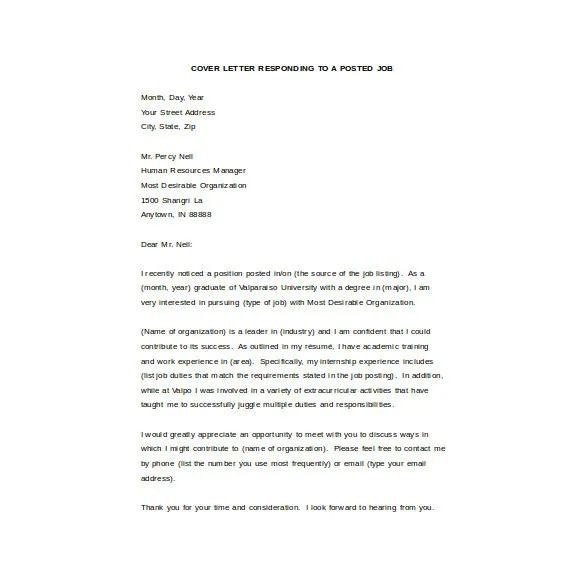
Reviewing examples can provide valuable insight into the structure, content, and tone of effective email body cover letters. These examples showcase different scenarios and highlight various approaches for different job seekers, from recent graduates to experienced professionals.
Example 1: Recent Graduate
This example emphasizes the applicant’s educational background, relevant coursework, and any internships or projects. The letter should highlight any transferable skills gained through these experiences. For example, it can demonstrate how academic projects or volunteer work have prepared them for the job, focusing on skills like teamwork, problem-solving, and communication. The goal is to show how the applicant’s academic background has prepared them for the job and highlight their passion for the field. The focus should be on the value the recent graduate brings to the role. It also underscores any awards or recognition that they have received.
Example 2: Career Changer
A career changer’s email body cover letter needs to focus on the transferable skills. This example should highlight the similarities between their prior experience and the target job’s requirements. It should describe how their past roles have equipped them with valuable skills. To improve impact, explain the reasons for the career change and what interests them about the new field. Be sure to mention any relevant training or certifications. It’s important to show enthusiasm and commitment to the new career path. They must emphasize adaptability and willingness to learn new things. The letter should bridge the gap between their prior experience and the job. By using their past experience to meet the current job requirements, they can make a stronger case to the hiring manager.
Example 3: Experienced Professional
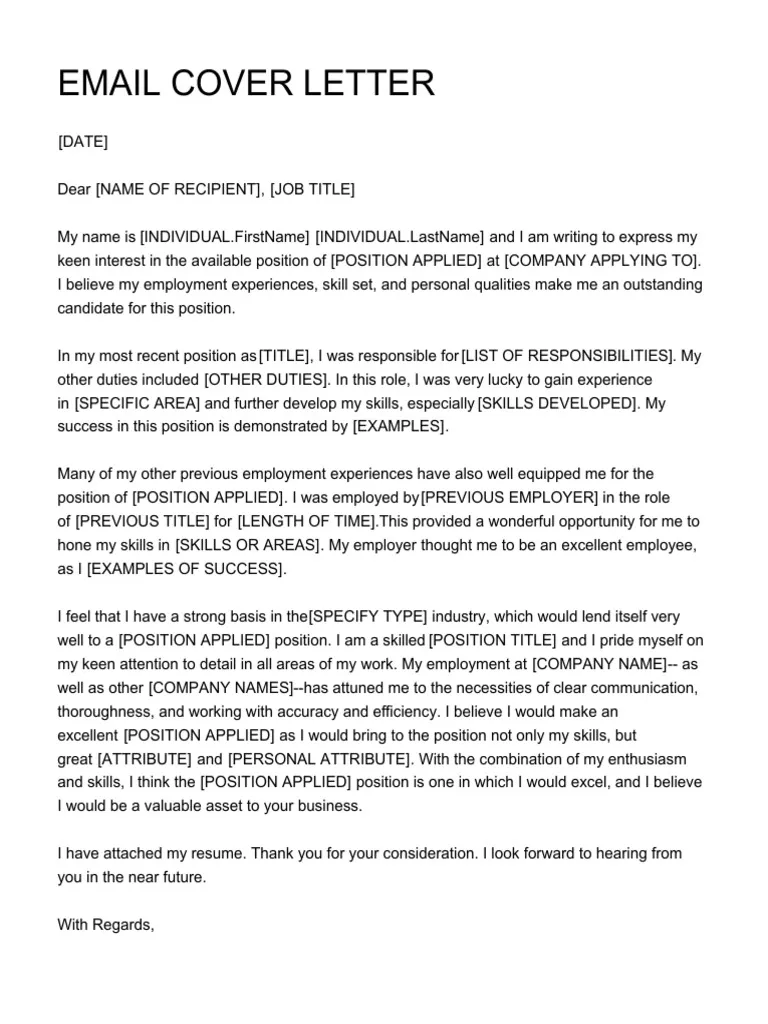
This example should focus on showcasing a candidate’s accomplishments and demonstrating how these results can benefit the new employer. It should provide specific, measurable achievements that highlight how they have met or exceeded expectations in previous roles. The experienced professional’s letter must reflect their understanding of the job and how their expertise makes them the ideal candidate. It should show leadership and a clear understanding of their value and skills. The goal is to illustrate the candidate’s impact and the tangible results of their work. It should show confidence and indicate that the candidate is fully prepared to contribute from day one. They should focus on the achievements relevant to the target role. It is also important to mention any awards or recognition that have resulted from the candidate’s work.
